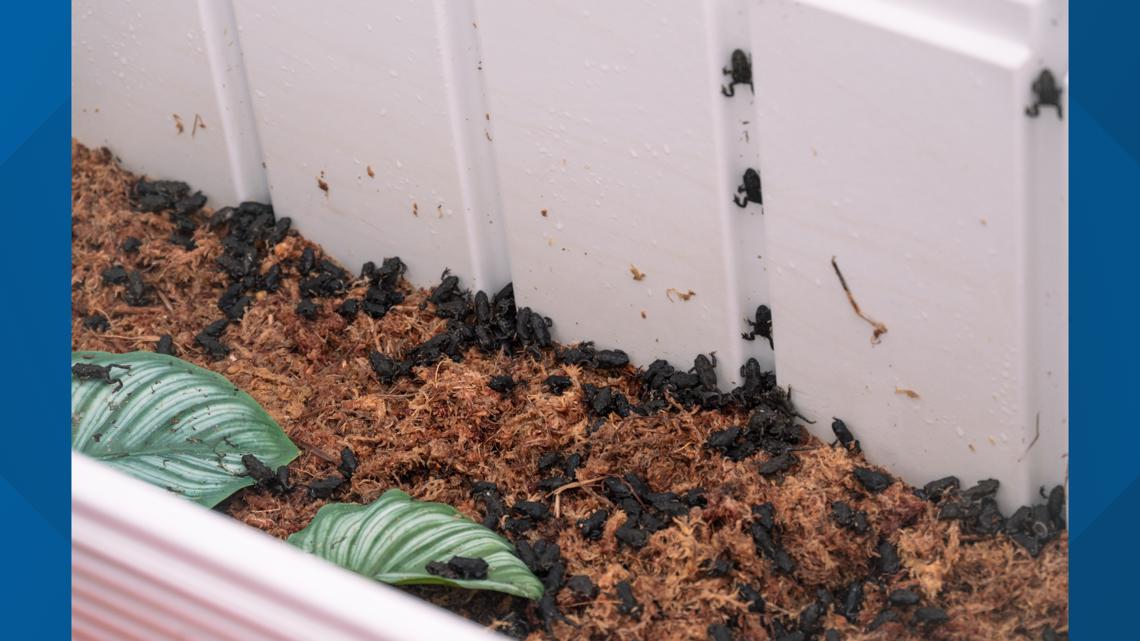CREEDE, Colo. — The Denver Zoo Conservation Alliance (DZCA) and Colorado Parks and Wildlife (CPW) have released more than 2,200 boreal toad tadpoles into the wetlands near Creede.
In 2021, DZCA and CPW launched the initiative that aimed to boost the state's population of boreal toads. The toads are listed as endangered in Colorado and New Mexico. The initiative started with 95 adult toads from CPW's Native Aquatic Species Restoration Facility in Alamosa.
Teams from both organizations went into the wetlands near Creede on June 20, to release the tadpoles that officials hope could eventually host an established population of rare amphibians. This was the second successful release with the first being in Gunnison National Forest. They released more than 600 tadpoles in 2022.
Before the release of the toads in the wild, experts from the zoo spent more than six months preparing the toads for breeding and tending to their offspring.
"Consistent propagation of boreal toads in captivity has been the major missing link in our conservation efforts," said Daniel Cammack, a southwest region native aquatic species biologist with CPW. "In the past, we relied solely on collecting fertilized eggs from wild populations to grow into tadpoles at the hatchery and stock at translocation sites. Thanks to the zoo’s expertise and hard work, we are able to increase our capacity and get more toads out at more locations."


The boreal toads were common in montane habitats between 7,000 to 12,000 feet in the southern Rocky Mountains. Over the past two decades, the population has drastically declined.
Officials estimate that there may be as few as 800 wild adult toads left in Colorado. The Denver Zoo said the small numbers are probably due to habitat loss and from an infection by the chytrid fungus, which can infect most of the world's 7,000 amphibian species. The infection is linked to other population declines and extinctions worldwide.
"We’re committed to continuing this effort with CPW for many years to come and doing our part to make sure this important species remains part of Colorado’s ecosystem for future generations," said Brian Aucone, chief conservation officer at Denver Zoo.
CPW has devoted resources for more than 30 years towards boreal toad research and continues to explore other ways to recover the endangered species. Officials said it will take years to bring the toads back to secure levels.
If you want to help, the Denver Zoo launched a community science project where volunteers monitor the boreal toad's habitat to help officials understand the health of current wild populations and determine other locations for future reintroductions of the toads.

